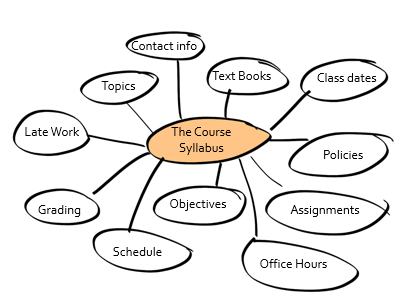Syllabus Design and Purpose
In this section, we will be discussing the design and purpose of a course syllabus. The course syllabus contains course information, policies, assignments, and more. There are three main functions of a syllabus, and they include the syllabus serving as a contract, a permanent record, and an aid in student learning.

Syllabus as a permanent record
The content in the syllabus is used for course approval and ongoing evaluation of instructors, courses, and programs by curriculum and evaluation committees. The syllabus documents what topics/content are being covered in the course and the course level. This information is also helpful for students who are wishing to transfer credit to determine course equivalency.
Syllabus as a contract
The syllabus acts as a contract between faculty and students. The syllabus sets clear expectations for the students allowing them to understand what is expected of them throughout the semester. It describes program and course policies to include attendance, grading, ADA, late/incomplete assignments, course cancellations, etc.
Syllabus as a learning tool
The syllabus acts as a learning tool, helping students become more effective learners in the course. It contains vital information that students can use to effectively plan their semester using time management. Additionally, it can inform students or the instructor’s teaching philosophy, puts the course into context, shares the relevance/importance, and shares campus assistance offices (writing lab, library, ADA office, etc.) with the students.
